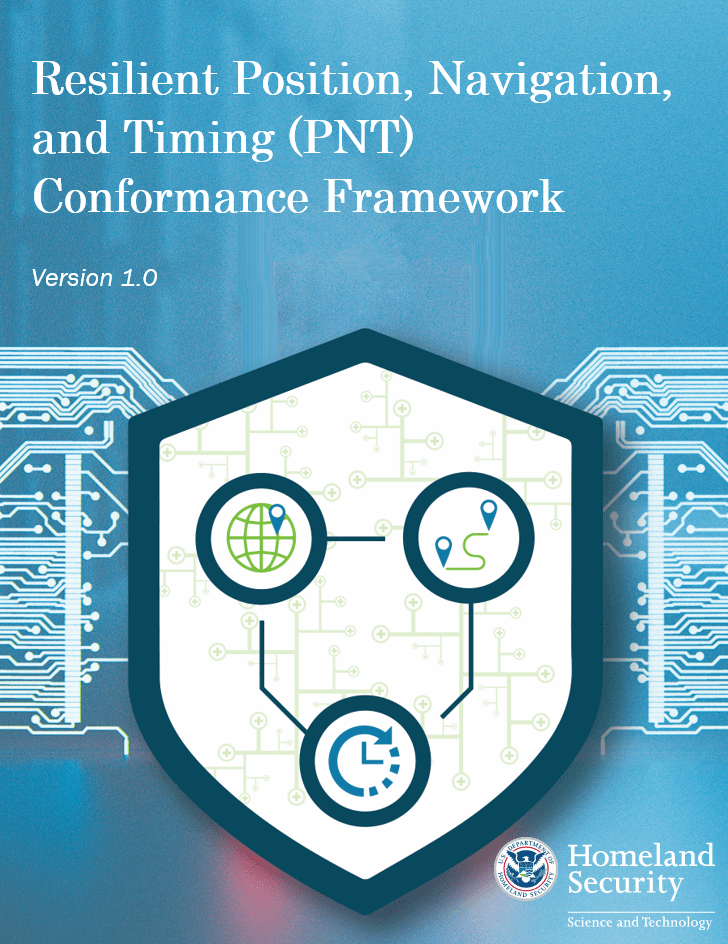The U.S. Department of Homeland Security (DHS) Science and Technology Directorate (S&T) recently released the Resilient PNT Conformance Framework. The Framework will inform the design and adoption of resilient PNT systems and help critical infrastructure become more resilient to PNT disruptions, such as the denial or manipulation of signals from the Global Positioning System (GPS).
Developed in coordination with industry and federal agency partners, the Framework provides guidance for defining expected behaviors in resilient PNT equipment. Its goal is to facilitate the development and deployment of behaviors of resilience through a common set of guidelines that enables improved risk management, determination of appropriate mitigations, and decision making by end users.
As DHS S&T stated in its 18-Dec-2020 news release, “The Resilient PNT Conformance Framework was developed with input from industry and is focused on outcome-based behaviors to encourage industry innovation and creativity in technical solutions.” Satelles actively participated in the development of the framework, with Dr. Michael O’Connor (CEO) and Christina Riley (VP of Commercial PNT) among the industry collaborators who contributed to this important U.S. Government-led initiative.
The Presidential Policy Directive for Critical Infrastructure Security and Resilience (PPD-21) defines resilience as “the ability to withstand and recover rapidly from disruptions” (e.g., deliberate attacks, accidents, or naturally occurring threats or incidents). The Framework provides a common reference point by defining expected behaviors across four progressively more demanding levels of resilience:
- Level 1 – ensures recoverability after removal of the threat
- Level 2 – provides a solution (possibly with unbounded degradation) during threat
- Level 3 – provides a solution (with bounded degradation) during threat
- Level 4 – provides a solution without degradation during threat
The levels are cumulative, with requirements in each level carrying over into the next. These levels offer flexibility in meeting different user needs and will help critical infrastructure owners and operators make risk-informed decisions when deciding what PNT equipment to deploy. The Framework levels are also designed so that Levels 1 and 2 should be feasible in the near-term, with Levels 3 and 4 expected to involve more architectural changes and help define the next generation of PNT systems.
In taking a broad view of the new guidelines, DHS S&T said this in a November 2020 preview: “The conformance framework is the next step forward and provides a common reference point defining what to expect from resilient PNT equipment. It provides distinct levels of resilience so end users can choose equipment that is appropriate for their needs, based on criticality and risk tolerance.”
The Resilient PNT Conformance Framework will also complement Federal activities required under Executive Order 13905, “Strengthening National Resilience through Responsible Use of PNT Services,” such as the cybersecurity profile for PNT services being developed by the National Institute of Standards and Technology (NIST).



